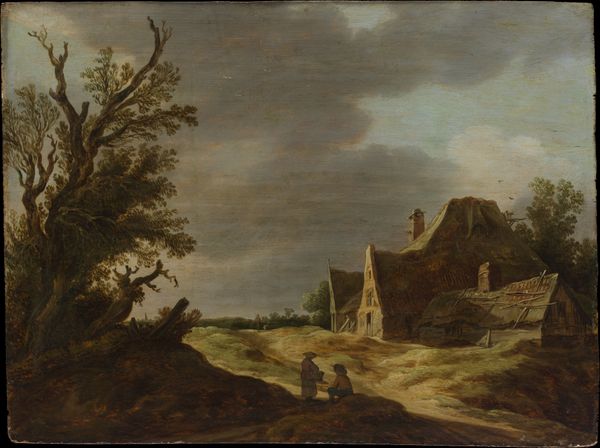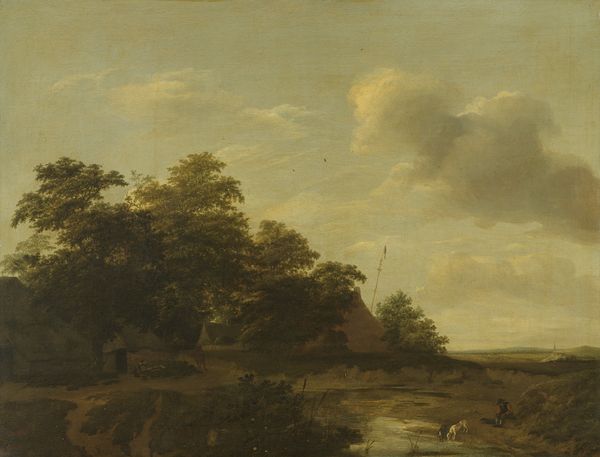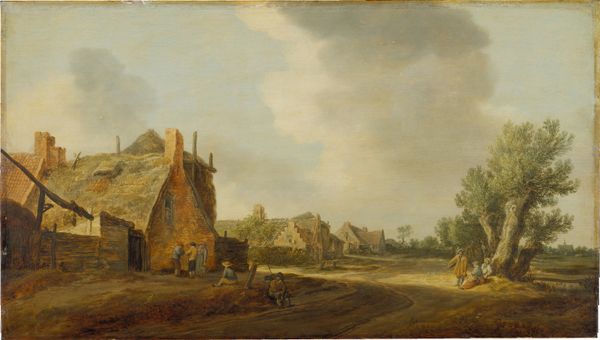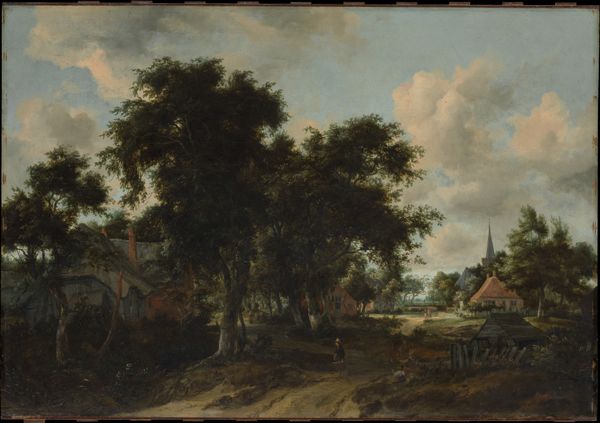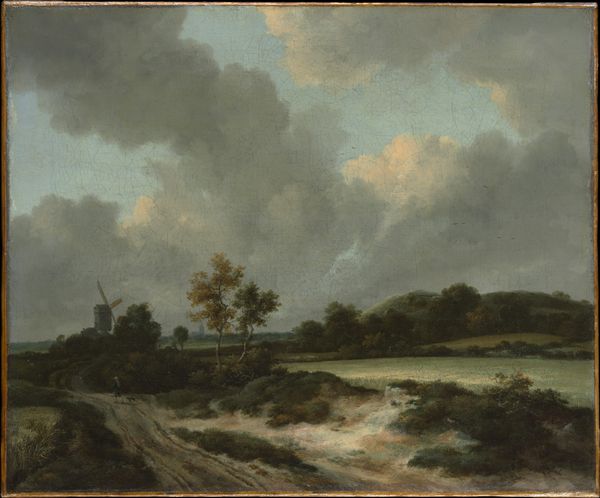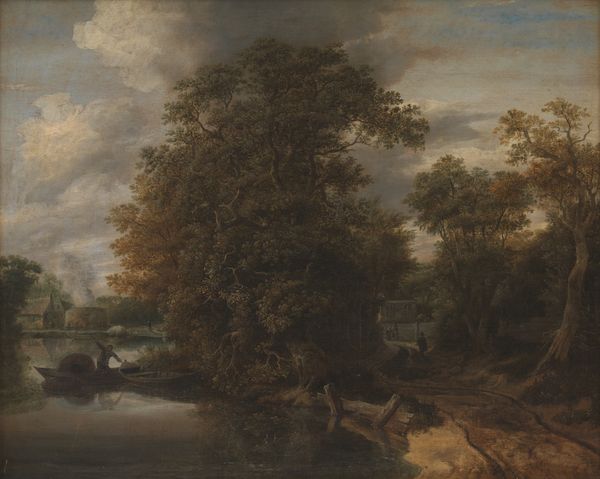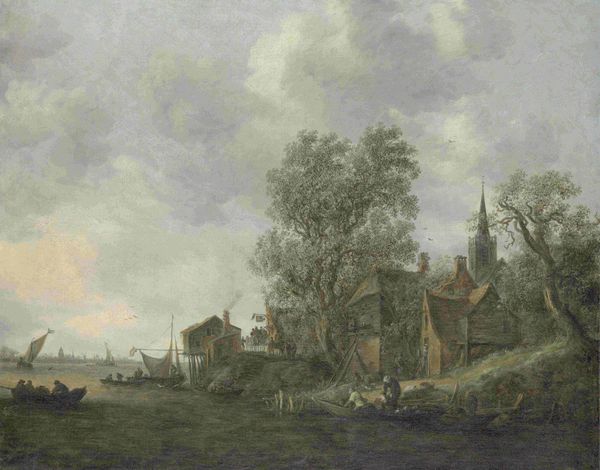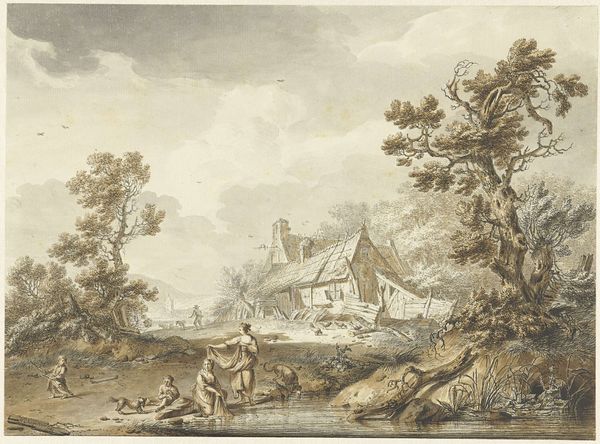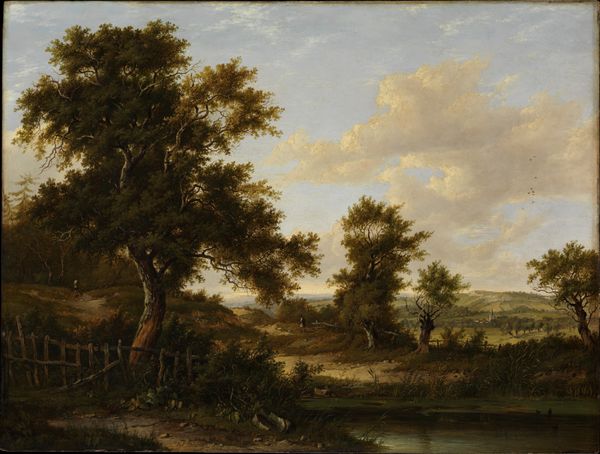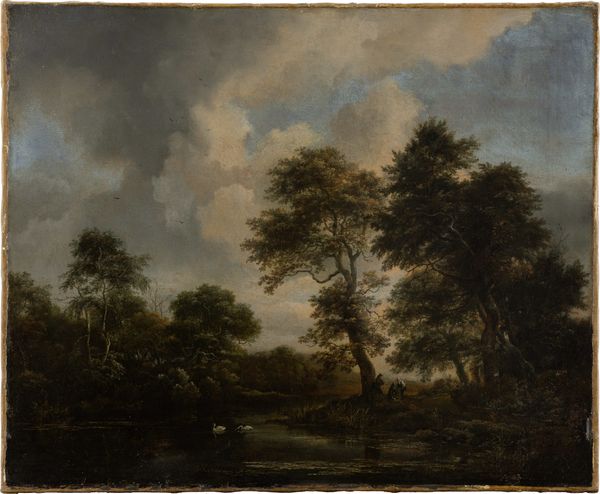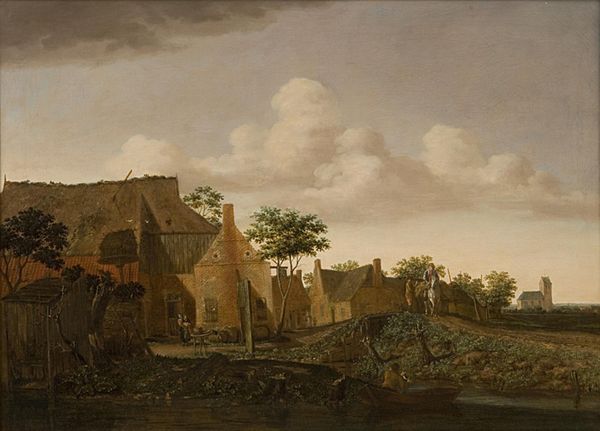
oil-paint, oil
#
baroque
#
animal
#
dutch-golden-age
#
oil-paint
#
oil
#
landscape
#
figuration
#
genre-painting
#
realism
#
building
Dimensions: 35.7 x 54.7 x min. 0.4 cm
Copyright: Public Domain
Curator: Immediately striking, wouldn’t you agree? The tonality evokes a palpable sense of nostalgia, a memory tinted by time. Editor: Indeed. We’re looking at Jan van Goyen’s “Landscape with Tavern,” created around 1628. It’s an oil on panel, a characteristic medium for Dutch Golden Age painting. It is currently housed in the Städel Museum. Curator: Observe the composition, the recession into space achieved through the muted palette and the subtle variations in tone. It's not merely representational; it’s an essay on light and atmosphere. How skillfully van Goyen guides our eye across the terrain, lingering on the tavern as a focal point, its very structure hinting at the societal narratives contained within. Editor: For me, it's more about the materials themselves. That thin, almost translucent paint application van Goyen was experimenting with. The visible brushstrokes – they show you his process right there, almost like archaeology. Also, look at that ochre earth, which I find far from picturesque: it likely represents the everyday material challenges for working-class people reliant on land-related trades and transit at that time. Curator: A valid interpretation. But doesn't the harmony of the piece speak volumes? The structure isn't merely physical, it also hints at underlying semiotic intent. It draws us into contemplation of nature's rhythms. Editor: True, the visual experience cannot be overlooked. Still, the reality for ordinary people in that landscape would be characterized by the labor and consumption directly tied to those same taverns. This wasn’t simply a picture, but the outcome of specific economic activity and the material limitations of that era, captured using valuable pigments obtained through an exploitative market. Curator: I perceive a tranquility born from structural cohesion; it is more about what can be, than about the restrictions that actually existed. Editor: While you admire its constructed harmony, I will consider its origin in labour and consumption as historical reflection.
Comments
No comments
Be the first to comment and join the conversation on the ultimate creative platform.
